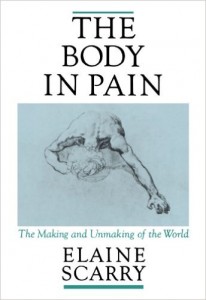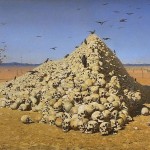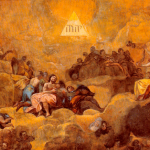DG: So is the GWOT like any previous war? Well, actually yes and no. Yes, if you consider it from a Just War Theory perspective. Michael Walzer in Just and Unjust Wars makes the case for “preventative war” by first examining the Six-Day War (1967), in which Israel, fearing an attack by Egyptian forces was imminent, launched airstrikes wiping out the Egyptian Air Force, followed by a ground assault that ended with the capture of the Sinai Pennisula, the Golan Heights, and the West Bank. Egypt suffered losses totally 20,000, while Israel’s casualties were less than a 1,000.
For Walzer preventative war is not like someone punching a bully in the nose before he has a chance to land a punch. A just war cannot be such a knee-jerk reaction, there is time–must be time–to gather intelligence, weigh options, and develop a strategy. But then Walzer does a very interesting and some would say controversial thing, he argues for the legitimacy of Israel’s surprise preventive attack on Egypt by saying that the conditions created by Egypt’s border massing created such psychological duress in the Israeli people as to dehumanize them.
I’ve gone the long way around here to answer your question, sorry. I guess I want to say that the GWOT is uncanny in that literal German way, both like and unlike/familiar and unfamiliar in a way that leads a terror of its own. Drone strikes? Extraordinary Rendition? Black sites? Gitmo? Are these things necessary? Are they proportionate responses to an actual attack, or are they preventive measures necessary in order to alleviate the great dehumanizing stress placed on innocent citizens?

To the second part of your question about its unique status and representations of violence. Well, maybe we just stick with the uncanny as a category of images and phenomena. Representing the violence of the GWOT is difficult without its personal and hidden images, images like Abu Ghraib that, remember, were never supposed to get out. The intimacy of photography, and, paradoxically, the impersonal nature of photography (in terms of the mechanical process by which the image is recorded) is key here. I took this both as a private memento, but then I will share it in a form that allows it to be disseminated around the world with the click of a button. There’s something Freudian happening here–not sure what he would have made of it, but if you think of sexting (the sending of nude/provocative pictures via smartphone for the purposes of titillation) it’s there, too. Here’s something so private and intimate and taboo that I want to share, and I don’t intend it for anyone else but you, but it’s like there’s something alive, or abiding, within these kinds of photos that wants to get out. Images of torture and degradation and porn images beg to be shared. Look at what I get to do, Charles Graner said to his friends and family in emails accompanying the images. Indeed.
And so representations of this war are mimicking the war itself, a highly mechanized and impersonal war that is also highly intimate–I’m thinking of the drone operator in a hangar in Utah looking through the camera of a drone thousands of miles away and seeing a wedding party leaving a celebration. This was is both hidden and in plain sight. And we like that, I think. It comforts us. We can look if we want, but we can also look away. And there’s no shame in looking, because you didn’t take the picture.
AR: Does the film American Sniper break through the decent American standing against the forces of darkness stereotype you analyze in your book or does it perpetuate it?
DG: In trying to get my mind around American Sniper I’ve been reflecting back other films directed by Eastwood, and the one that jumped out at me is the 2004 Million Dollar Baby, which I believe Hilary Swank won best actress for. It came to mind not because I liked it so much, but because Alasdair MacIntyre recommended it to me. First off, McIntyre is a genius and I can only claim to have read a small portion of his output as a philosopher/theologian, and of that small portion I have had to be helped through it by smarter, more well-read people–all of whom are also philosophers and/or theologians.
I had a meeting with MacIntyre in his office at Notre Dame. I asked to meet with him because of a comment he made at a conference hosted by Notre Dame called “Epiphanies of Beauty” with a subtitle that was something like, “Art in the post-Christian Era.” He gave a talk called “What Makes a Painting a Religious Painting,” and I asked him a question during the Q&A about Francis Bacon’s crucifixion-inspired paintings and his studies of Pope Innocent X, which are truly scary. He declined to answer my question, saying that he only spoke about Francis Bacon in private.












